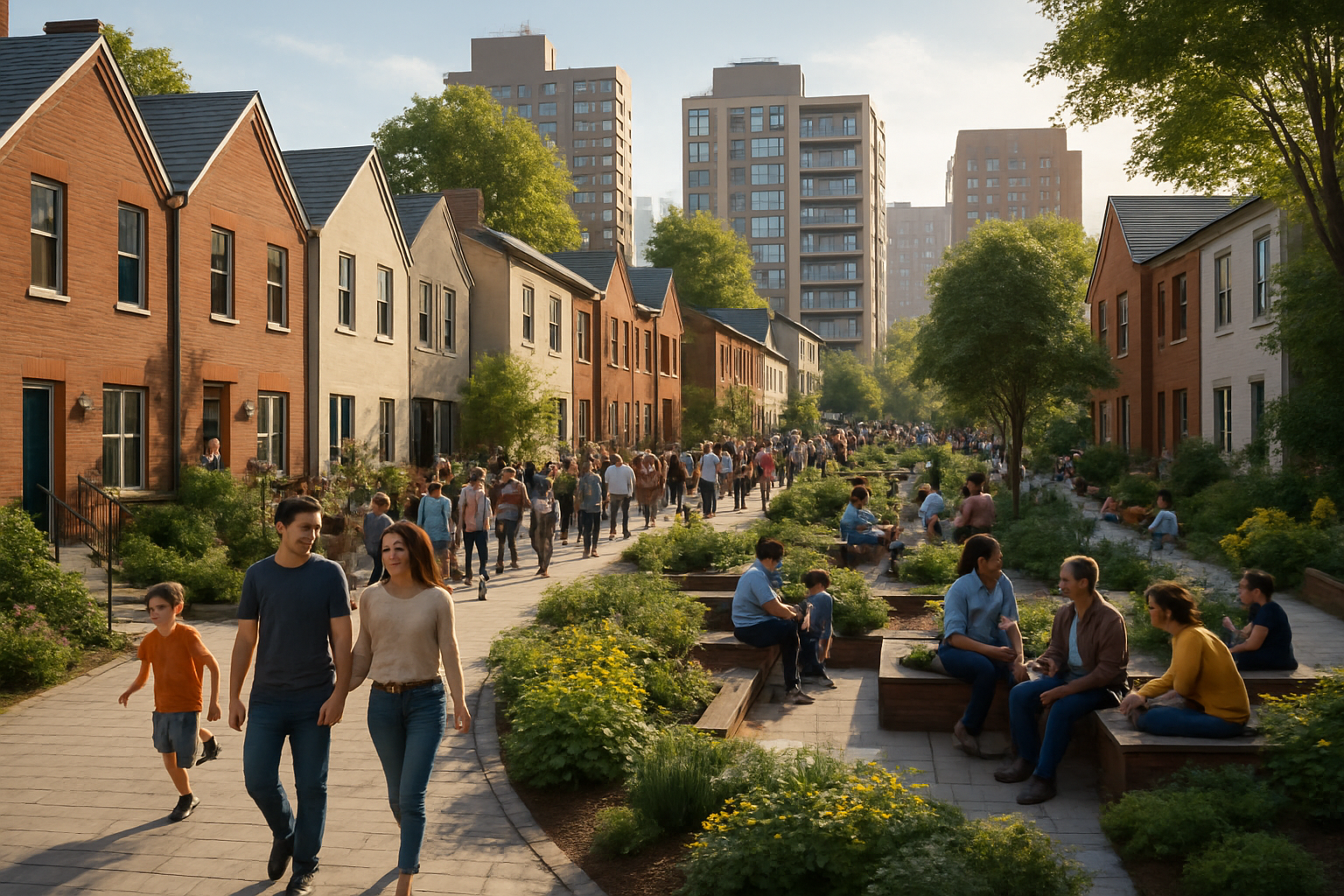Slow Streets: Reimagining Urban Spaces for Community Connection
In a world of fast-paced urban living, a quieter revolution is taking hold on our city streets. Slow Streets, a progressive urban design concept, is transforming neighborhoods and challenging our relationship with public spaces. Read below to discover how this movement is reshaping cityscapes and fostering stronger communities.

The Genesis of Slow Streets
The concept of Slow Streets emerged from a confluence of urban planning philosophies and grassroots movements. Its roots can be traced back to the 1960s with initiatives like Dutch woonerf (living streets) and the Italian Cittaslow (slow city) movement. These early experiments sought to reclaim urban spaces for pedestrians and foster a sense of community in increasingly car-centric cities.
As urbanization intensified in the late 20th century, the need for human-scale interventions became more apparent. Traffic congestion, air pollution, and the erosion of community ties prompted urban planners and activists to seek alternative models for city living. The Slow Streets concept gained momentum in the early 2000s, aligning with broader sustainability and livability goals.
Anatomy of a Slow Street
Slow Streets are characterized by their emphasis on pedestrian and cyclist safety, reduced vehicle speeds, and enhanced public amenities. Typical features include:
-
Traffic calming measures: Speed bumps, chicanes, and narrowed roadways discourage speeding and cut-through traffic.
-
Shared spaces: Blurred boundaries between sidewalks and streets encourage a more fluid use of space.
-
Green infrastructure: Increased vegetation, parklets, and rain gardens improve aesthetics and environmental performance.
-
Community gathering spots: Seating areas, play spaces, and public art installations foster social interaction.
-
Flexible zoning: Allowing for pop-up markets, outdoor dining, and temporary closures for events.
These elements work in concert to create environments that prioritize human interaction and sustainable mobility over automotive convenience.
The Social Impact of Slow Streets
The implementation of Slow Streets has far-reaching effects on community dynamics and individual well-being. Research indicates that these redesigned spaces lead to increased social cohesion, improved physical health, and enhanced quality of life for residents.
A study conducted by the University of California, Berkeley found that neighborhoods with Slow Street implementations saw a 65% increase in outdoor social activities and a 40% reduction in reported feelings of isolation among residents. The increased pedestrian activity also correlates with improved local economic vitality, with small businesses reporting upticks in foot traffic and sales.
Moreover, the emphasis on active transportation and reduced vehicle speeds has tangible health benefits. A longitudinal study in Copenhagen demonstrated a 28% decrease in traffic-related injuries and a 15% increase in regular physical activity among residents living near Slow Street interventions.
Challenges and Controversies
Despite their potential benefits, Slow Streets are not without controversy. Critics argue that these interventions can lead to gentrification, exacerbating housing affordability issues in revitalized neighborhoods. There are also concerns about the potential displacement of traffic to surrounding areas and the impact on emergency vehicle access.
Addressing these challenges requires careful planning and community engagement. Successful Slow Street projects often involve extensive public consultation, phased implementation, and ongoing evaluation to ensure equitable outcomes and address unintended consequences.
Global Adaptations and Innovations
As the Slow Streets concept spreads globally, it is being adapted to diverse urban contexts. In Barcelona, the Superblocks initiative takes the idea to a larger scale, creating car-free zones across multiple city blocks. Tokyo’s shared streets, known as community roads, blend seamlessly with the city’s dense urban fabric, demonstrating how the concept can work in space-constrained environments.
In the wake of the COVID-19 pandemic, many cities accelerated their Slow Streets programs as a response to changing mobility needs and public health concerns. These emergency interventions have provided valuable data and experiences that are shaping long-term urban planning strategies.
The Future of Urban Mobility
As we look to the future, Slow Streets represent more than just a design trend; they embody a fundamental shift in how we conceive of urban spaces. The movement challenges the car-centric paradigm that has dominated city planning for decades, offering a vision of cities that prioritize human connection, environmental sustainability, and quality of life.
Emerging technologies like autonomous vehicles and smart city infrastructure present both opportunities and challenges for the Slow Streets model. As these technologies evolve, urban planners and policymakers will need to navigate complex trade-offs between efficiency, accessibility, and the preservation of human-scale environments.
The Slow Streets movement reminds us that cities are, at their core, spaces for human interaction and community building. By reclaiming our streets as places for people rather than just conduits for traffic, we have the opportunity to create more livable, sustainable, and vibrant urban environments for generations to come.




